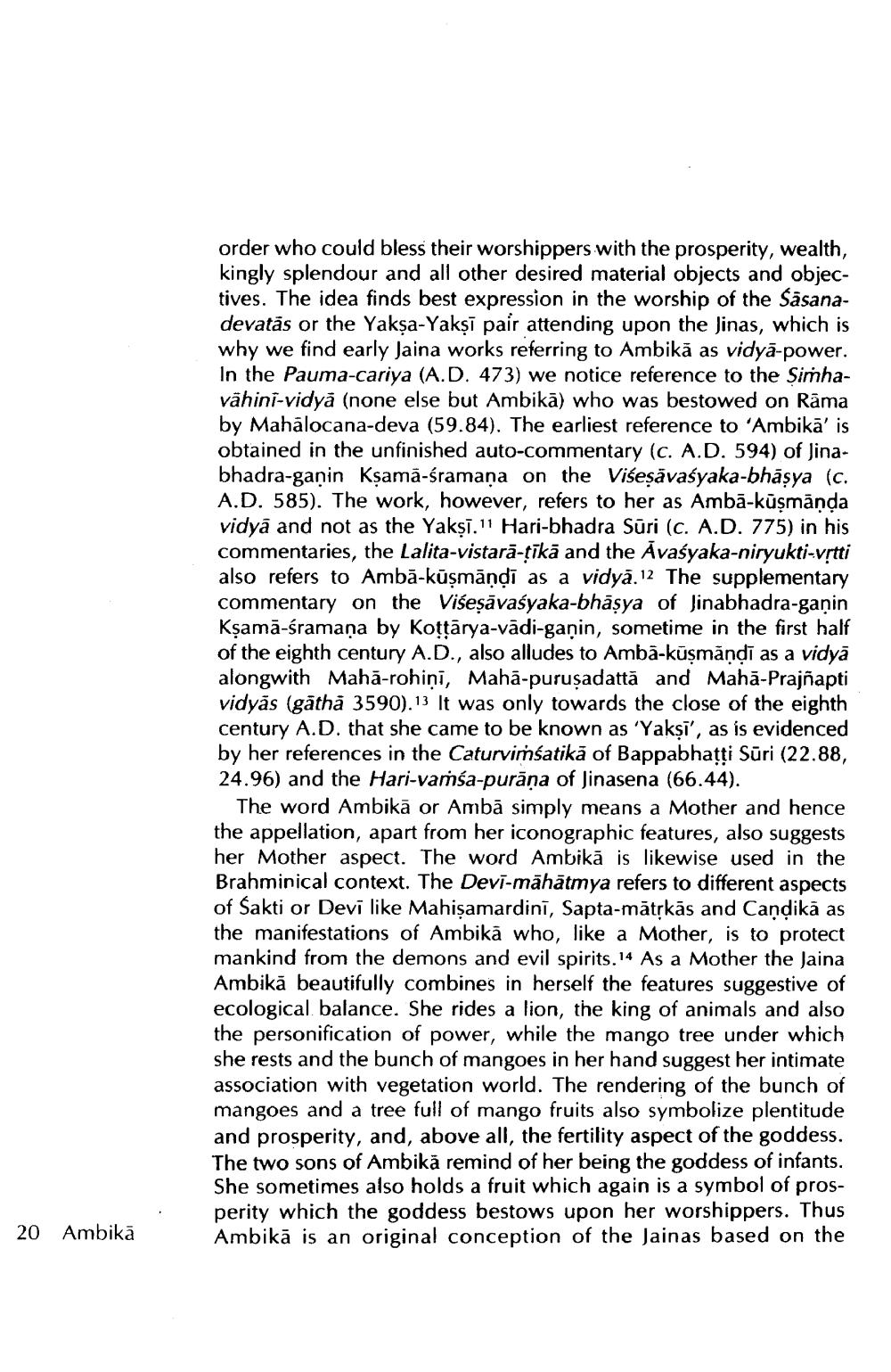________________
order who could bless their worshippers with the prosperity, wealth, kingly splendour and all other desired material objects and objectives. The idea finds best expression in the worship of the Sasanadevatās or the Yakşa-Yakşi pair attending upon the linas, which is why we find early Jaina works referring to Ambika as vidyā-power. In the Pauma-cariya (A.D. 473) we notice reference to the Simhavähini-vidyă (none else but Ambikā) who was bestowed on Rāma by Mahālocana-deva (59.84). The earliest reference to 'Ambikā' is obtained in the unfinished auto-commentary (c. A.D. 594) of Jinabhadra-ganin Ksamā-śramana on the Visesavasyaka-bhāsya (c. A.D. 585). The work, however, refers to her as Ambā-kūşmānda vidyā and not as the Yakşī.11 Hari-bhadra Sūri (c. A.D. 775) in his commentaries, the Lalita-vistarā-tīkā and the Avaśyaka-niryukti-vrtti also refers to Ambā-kūsmāņdi as a vidyā. 12 The supplementary commentary on the Višeşāvaśyaka-bhāşya of Jinabhadra-ganin Kșamā-śramaņa by Kottārya-vādi-ganin, sometime in the first half of the eighth century A.D., also alludes to Ambā-küşmāndi as a vidyā alongwith Mahā-rohiņi, Mahā-puruṣadatta and Mahā-Prajñapti vidyās (gātha 3590).13 It was only towards the close of the eighth century A.D. that she came to be known as 'Yakşi', as is evidenced by her references in the Caturviṁsatikā of Bappabhatti Sūri (22.88, 24.96) and the Hari-vamśa-purāņa of Jinasena (66.44).
The word Ambikā or Ambā simply means a Mother and hence the appellation, apart from her iconographic features, also suggests her Mother aspect. The word Ambikā is likewise used in the Brahminical context. The Devi-māhātmya refers to different aspects of Sakti or Devi like Mahisamardini, Sapta-matrkās and Candikā as the manifestations of Ambikā who, like a Mother, is to protect mankind from the demons and evil spirits. 14 As a Mother the Jaina Ambikā beautifully combines in herself the features suggestive of ecological balance. She rides a lion, the king of animals and also the personification of power, while the mango tree under which she rests and the bunch of mangoes in her hand suggest her intimate association with vegetation world. The rendering of the bunch of mangoes and a tree full of mango fruits also symbolize plentitude and prosperity, and, above all, the fertility aspect of the goddess. The two sons of Ambikā remind of her being the goddess of infants. She sometimes also holds a fruit which again is a symbol of prosperity which the goddess bestows upon her worshippers. Thus Ambikā is an original conception of the Jainas based on the
20 Ambika




